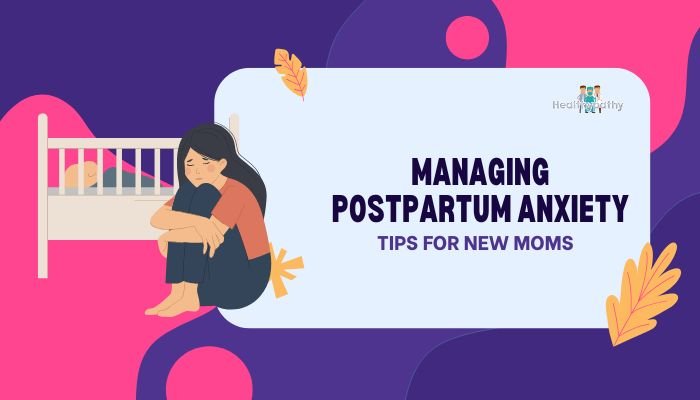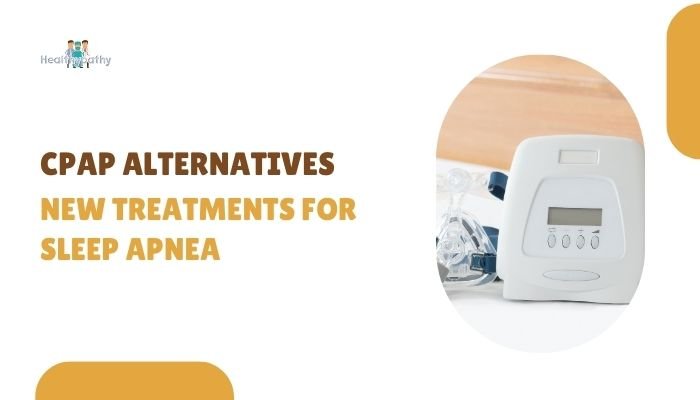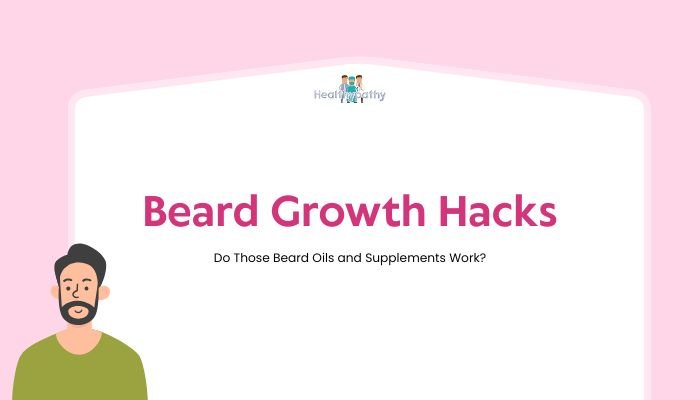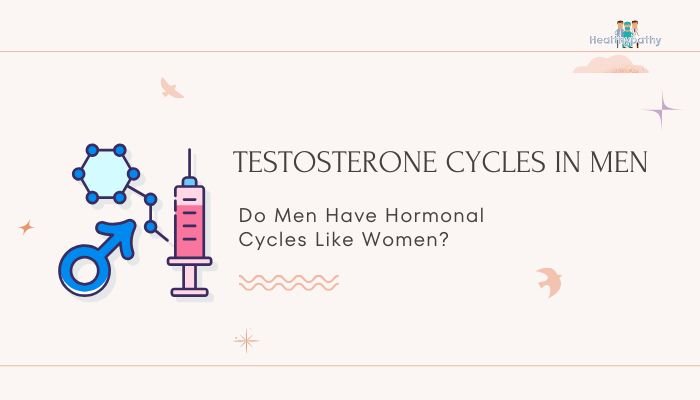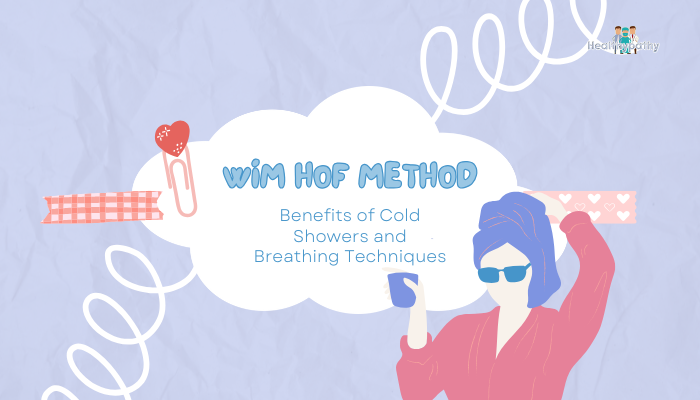Introduction
Becoming a new mother can be a transformative experience. The weeks and months after delivery—often referred to as the “fourth trimester”—typically include physical healing, lack of sleep, and major lifestyle changes. While many people are aware of postpartum depression, another equally important but less frequently discussed condition is postpartum anxiety.
Mothers may feel persistent worry or a sense of impending doom about their baby’s health, well-being, or their own ability to cope. In some cases, postpartum anxiety can overshadow the joy of bonding with a newborn and make daily tasks seem overwhelming.
This article explains what postpartum anxiety is, highlights its symptoms, and explores why new mothers may develop it. We’ll also discuss methods to manage intrusive thoughts, find professional help, and cultivate a healthier approach to motherhood.
By understanding postpartum anxiety and learning effective coping strategies, new mothers can reclaim a sense of calm, support their mental health, and build a strong foundation for enjoying life with their newborn.
Understanding Postpartum Anxiety
What Is Postpartum Anxiety?
Postpartum anxiety (PPA) is a mental health condition that can appear during pregnancy or after childbirth, though it most commonly manifests in the early months following delivery. Unlike baby blues—short, mild mood fluctuations that resolve within a couple of weeks—postpartum anxiety produces persistent worry and tension that can disrupt daily functioning.
Postpartum anxiety doesn’t always look the same from one woman to another. Some may experience constant worry or fear regarding their child’s safety, while others focus on cleanliness, SIDS (Sudden Infant Death Syndrome), or feeding routines. The anxiety may center on finances, relationships, or meeting societal expectations about motherhood. If left unaddressed, postpartum anxiety can erode a mother’s quality of life and impede her ability to care for herself and her baby.
Postpartum Anxiety vs. Postpartum Depression
Postpartum depression (PPD) and postpartum anxiety can have overlapping features—like irritability, mood swings, or disrupted sleep—but there are key differences:
- Core Focus of Distress
- PPD: Characterized by persistent sadness, hopelessness, and difficulty bonding with the baby.
- PPA: Centers on excessive fears and worries, tension, or panic symptoms.
- Typical Emotional Tone
- PPD: A sense of despair or lack of energy.
- PPA: Intense worry, racing thoughts, and sometimes physical symptoms (racing heart, sweating, hypervigilance).
- Overlap
- Both PPD and PPA can occur simultaneously, and it’s not unusual for a new mother to have symptoms of both conditions.
The distinction matters because it informs treatment approaches. For example, a woman with postpartum anxiety might benefit more from strategies focusing on relaxation and thought-challenging exercises, while someone with postpartum depression might need interventions that address low mood, motivation, and self-esteem. However, many therapies can be effectively adapted to treat both.
Types of Postpartum Anxiety Disorders
While postpartum anxiety is often used as an umbrella term, several specific anxiety conditions can develop or worsen during the postpartum period:
- Generalized Anxiety Disorder (GAD): Characterized by constant worry about multiple topics (baby’s health, finances, personal relationships).
- Panic Disorder: Involves recurring, unexpected panic attacks—sudden bouts of intense fear or discomfort accompanied by physical symptoms such as racing heart and shortness of breath.
- Postpartum Obsessive-Compulsive Disorder (OCD): Mothers may experience intrusive, repetitive thoughts about harming the baby (though they don’t want to) or perform compulsive behaviors (excessive cleaning, checking, or mental rituals).
- Phobias and Specific Fears: Concerns about driving with the baby, leaving the house, or exposing the infant to germs can evolve into specific phobias.
In each of these conditions, postpartum triggers—such as hormonal shifts, lack of sleep, or new responsibilities—can exacerbate a mother’s inherent predisposition to anxiety.
Causes and Risk Factors
Biological Influences
- Hormonal Changes: Rapid drops in estrogen, progesterone, and other pregnancy-related hormones can intensify emotional reactivity and stress responses.
- Neurotransmitter Sensitivity: Women with postpartum anxiety may have preexisting chemical imbalances that become more pronounced after childbirth.
Psychological and Environmental Factors
- Personal or Family History: A history of depression or anxiety increases the likelihood of postpartum anxiety, as does having relatives with mood disorders.
- Childbirth Experience: Traumatic or complicated deliveries—including emergency cesareans, excessive blood loss, or unplanned medical interventions—can heighten postpartum stress.
- Perfectionism and High Expectations: New mothers with perfectionist tendencies may place unrealistic demands on themselves, amplifying anxiety.
- Life Stressors: Lack of social support, financial worries, relationship conflicts, or housing uncertainties can compound postpartum challenges.
The Role of Sleep Deprivation
Caring for a newborn often entails frequent night feedings and irregular sleep schedules. Chronic sleep deprivation interferes with cognitive function, emotional regulation, and overall mental health, making it more difficult for new mothers to manage anxiety triggers. In a vicious cycle, anxiety can further disrupt sleep quality, fueling ongoing exhaustion.
Recognizing Symptoms of Postpartum Anxiety
Emotional and Cognitive Signs
- Excessive Worry: Persistent, racing thoughts about potential dangers or worst-case scenarios.
- Irritability: Feeling on edge, snapping at loved ones or experiencing fleeting anger.
- Intrusive Thoughts: Scary mental images or repetitive concerns about harm coming to the baby.
- Restlessness: Difficulty sitting still, relax, or focusing on enjoyable activities.
- Difficulty Making Decisions: Even routine tasks, like picking out clothes for the baby, may provoke distress.
Physical Symptoms
- Fast Heart Rate or Palpitations: Heart pounding without significant exertion.
- Shortness of Breath: Shallow breathing or tightness in the chest, especially during stressful moments.
- Muscle Tension and Aches: Neck, shoulders, or back pain due to chronic stress.
- GI Distress: Nausea, upset stomach, or loss of appetite.
- Sleep Disturbances: Struggling to fall asleep or stay asleep, even if the baby is calm.
Impact on Daily Life
- Avoiding Activities: Staying indoors due to fear something might happen outside.
- Checking Behaviors: Repeatedly verifying that the baby is breathing, the doors are locked, or the house is secure.
- Difficulty Bonding: Constant anxiety can overshadow the joy of parent-child interactions.
- Feelings of Inadequacy: Worrying about being a “bad mother” or “not good enough.”
If these symptoms persist for more than a couple of weeks and interfere with daily functioning or well-being, it’s essential to consider seeking professional guidance.
Practical Strategies for Managing Postpartum Anxiety
Build a Strong Support Network
Isolation often magnifies anxious feelings, making new mothers feel overwhelmed. Active social and emotional support can reduce the burden:
- Communicate with Your Partner: Share specific worries and delegate childcare tasks when feasible.
- Reach Out to Friends: Even short visits or phone calls can remind you that you’re not alone.
- Join Mommy Groups or Online Forums: Connecting with other mothers provides an outlet to vent and receive empathy from those who understand postpartum challenges.
Prioritize Rest and Sleep
While obtaining sufficient rest can feel impossible with a newborn, a few tips can help mitigate the harmful effects of sleep loss:
- Nap When the Baby Naps: Instead of catching up on chores, consider short naps to restore energy.
- Split Nighttime Duties: If possible, coordinate with a partner or family member for nighttime feedings so you can have a solid block of sleep.
- Establish a Relaxing Bedtime Routine: Even a brief pre-sleep ritual—like drinking herbal tea or dimming the lights—signals your body to unwind.
Practice Mindfulness and Relaxation Techniques
Mindfulness-based interventions can help ground new mothers in the present, easing racing thoughts:
- Deep Breathing: Inhale for a slow count of four, hold for a moment, and exhale for four counts. Repeat several times.
- Progressive Muscle Relaxation: Systematically tense and then relax each muscle group from toes to head, relieving tension and stress.
- Guided Imagery: Visualize a calm, comforting setting—like a quiet beach or peaceful forest. Engage all senses in the mental picture to distract from anxious thoughts.
Set Manageable Expectations
Unrealistic standards can fuel anxiety when reality doesn’t match your ideal:
- Simplify Goals: Identify key tasks for the day—like feeding, diaper changes, and resting. Everything else can wait or be delegated.
- Give Yourself Grace: Perfectionism adds unnecessary pressure. Mistakes are normal, and learning happens each step of motherhood.
- Acknowledge Small Wins: Did you successfully soothe the baby or manage to eat breakfast? Celebrate these mini-achievements to reinforce a sense of progress.
Engage in Gentle Physical Activity
Physical exercise benefits mood by releasing endorphins and reducing muscle tension:
- Walks with the Baby: A short daily stroll can energize you and help the baby relax with fresh air.
- Postpartum Yoga or Stretching: Gentle poses restore strength and flexibility, while deep breathing promotes calmness.
- Pelvic Floor Exercises: Subtle Kegels or pelvic tilts can relieve stress and aid in physical recovery.
Use Positive Self-Talk and Thought Challenging
Cognitive restructuring can help transform negative patterns:
- Identify Anxious Thoughts: “I’m afraid something terrible will happen if we leave the house.”
- Challenge the Fear: Ask yourself, “What evidence supports this worry? Have I managed outings in the past?”
- Replace with a Balanced Perspective: “It’s natural to feel cautious, but with proper precautions, short walks are safe and beneficial for both me and the baby.”
Incorporate Small Self-Care Moments
New mothers often feel guilty for devoting any time to themselves, but self-care is essential for sustained well-being:
- Short Breaks: Sip tea, read a page or two of a book, or enjoy a quick shower without interruption.
- Creative Outlets: If you liked painting, journaling, or crafting before pregnancy, try brief sessions to decompress.
- Pampering: A warm bath or a gentle massage can calm both the mind and body, reducing anxiety symptoms.
Limit Overstimulation
Constant noise, clutter, or excessive visitors can overwhelm a new mother:
- Screen Time Boundaries: Scrolling through social media often triggers comparisons or negative emotions. Set phone-free intervals.
- Organize the Nursery: A tidy, simplified space can soothe anxious minds. Keep essential baby items accessible and reduce the clutter of unused gear.
- Say No Politely: If you’re not ready for visitors or events, it’s okay to decline politely until you feel more comfortable.
Professional Help and Therapy Options
Signs You May Need Professional Assistance
Not all postpartum anxiety subsides with self-help methods. Certain signs indicate it’s time to consult a mental health professional:
- Constant Worry Without Relief: Anxiety persists even after implementing healthy coping strategies.
- Panic Attacks: Episodes of intense fear or physical symptoms like shortness of breath and dizziness.
- Inability to Complete Daily Tasks: Anxiety stops you from feeding or caring for the baby.
- Sleep Disturbances: Lack of restful sleep leads to near-constant exhaustion, amplifying anxious thoughts.
- Frequent Intrusive Thoughts: Persistent, distressing images or urges that feel out of control.
Therapy Approaches
- Cognitive Behavioral Therapy (CBT): Focuses on identifying distorted thought patterns and adopting healthier responses.
- Interpersonal Therapy (IPT): Helps navigate the role transitions and relationship changes of motherhood.
- Acceptance and Commitment Therapy (ACT): Encourages new mothers to accept negative feelings without letting them dominate behavior or identity.
Some mothers benefit from a blend of therapies or specialized postpartum counseling programs offered by women’s health clinics.
Medication and Medical Support
- Antidepressants: Selective serotonin reuptake inhibitors (SSRIs) can help stabilize mood and reduce anxiety. Healthcare providers typically weigh benefits and potential impacts on breastfeeding.
- Anxiolytics: In some cases, short-term use of anti-anxiety medications can help manage acute symptoms.
- Consult a Psychiatrist: For complex cases or when multiple medications or coexisting conditions are involved, seeing a psychiatrist with perinatal experience ensures tailored treatment.
Hormone-Based Therapies
Some research suggests hormone imbalances exacerbate postpartum anxiety. The following may be explored under medical supervision:
- Estrogen Therapy: Though not as common, supplemental estrogen could alleviate severe symptoms in some women.
- Brexanolone Infusions: An FDA-approved medication for postpartum depression that may also impact anxiety symptoms. Its availability is limited, and hospitalization might be required for administration.
The Role of Partners and Loved Ones
Encouraging a Supportive Environment
Partners, family, and friends can significantly affect a mother’s day-to-day anxiety management:
- Open Communication: Ask how she’s feeling. Avoid dismissing her concerns as “normal motherly worry.”
- Validation: Recognize that postpartum anxiety is real and challenging, not a sign of weakness.
- Practical Help: Offer assistance with household tasks, babysitting, or errands to lighten her load.
- Monitor Her Well-Being: If anxiety escalates, gently suggest professional consultation and reassure her that seeking help demonstrates strength and care.
Signs a Partner or Relative Should Intervene
- Persistent Mood Changes: If the mother’s anxiety or irritability worsens over several weeks.
- Extreme Exhaustion: She’s unable to get out of bed or function on a basic level.
- Isolation: She consistently avoids social contact or activities that once brought her happiness.
- Concerning Statements: References to hopelessness, self-harm, or an inability to cope.
In these scenarios, a calm conversation can open the door to scheduling a medical or counseling appointment. Offer to accompany her or help with childcare logistics.
Relationship Between Postpartum Anxiety and Bonding
How Anxiety Can Disrupt Mother-Infant Bonding
Excessive worry can overshadow moments meant for tender, playful interactions:
- Hypervigilance: Constantly checking the baby’s breathing or fussing over minor details may leave little mental space for spontaneous affection.
- Guilt: Mothers may believe they’re failing at motherhood, creating a barrier to forming a relaxed, confident relationship with the baby.
- Emotional Distance: If the mother fears doing something wrong, she might avoid holding or feeding the baby, missing important bonding opportunities.
Ways to Foster a Healthier Connection
- Skin-to-Skin Contact: Holding the baby against one’s chest can calm both mother and child, reinforcing positive attachment.
- Responsive Feeding: Whether breastfeeding or bottle-feeding, look into the baby’s eyes, speak softly, and remain attuned to hunger cues.
- Calming Activities: Gentle rocking, lullabies, or infant massage help mothers engage with their babies in a low-pressure context, reducing anxiety and building trust.
- Celebrate Milestones: Noticing the baby’s first coos or reflexes strengthens emotional ties and highlights the joys of motherhood, counteracting intrusive worries.
Planning for Future Pregnancies
Learning from Past Postpartum Experiences
Women who’ve experienced postpartum anxiety can often plan more effectively for subsequent pregnancies:
- Inform Your Healthcare Team: Share your mental health history so they can monitor signs of anxiety earlier.
- Create a Postpartum Action Plan: Draft a list of supportive resources—therapists, hotlines, friends who can help with newborn care—and keep it on hand.
- Mental Health Maintenance: Continuing therapy or medication between pregnancies may prevent severe relapses.
Expanding Support Networks
- Prenatal Classes: Some classes address perinatal mental health and coping skills.
- Therapy Check-Ins: Scheduling a few counseling sessions during late pregnancy can help manage anticipatory anxieties.
- Family Education: Partners and close relatives can learn the signs of anxiety, ensuring prompt intervention if symptoms resurface.
Frequently Asked Questions About Postpartum Anxiety
- How soon after childbirth can postpartum anxiety begin?
Postpartum anxiety can start within days or weeks of childbirth. In some cases, it appears gradually or months later, especially if life stressors accumulate. - Can fathers or non-birthing parents develop postpartum anxiety?
Yes. Although most discussions focus on mothers, partners of any gender can experience similar symptoms due to new responsibilities, sleep deprivation, and concern for the baby. - Is postpartum anxiety treatable without medication?
Yes. Many mothers find relief through therapy, self-help strategies, and lifestyle changes. However, medication can be life-changing if symptoms are severe or do not improve with non-pharmacological measures. - Will postpartum anxiety go away on its own?
Mild cases might improve as hormones stabilize and sleep patterns normalize. More severe or persistent cases typically require professional guidance to ensure lasting relief and prevent escalating distress. - Should I still breastfeed if I’m taking anxiety medication?
Some drugs are considered relatively safe during breastfeeding, but each medication has unique considerations. Discuss options with a healthcare provider to make an informed decision. - What if my family thinks I’m just overreacting?
Anxiety is a valid and diagnosable condition. Seek the advice of a mental health professional if your concerns are dismissed. You deserve competent support and treatment.
Self-Assessment: Reflecting on Your Emotional Health
H3: Simple Checklist
If you’re unsure whether your anxiety levels are typical, consider these questions:
- Frequency: Am I worried about parenting or the baby’s well-being most of the time, every day?
- Severity: Do these worries stop me from eating, sleeping, or enjoying daily moments?
- Physical Symptoms: Is my heart racing or my breathing shallow whenever I think about the future or the baby’s safety?
- Duration: Have these anxious feelings persisted for more than two weeks?
- Impact: Does anxiety reduce the joy I feel when caring for my newborn or bonding with family?
Answering “yes” to several items may indicate you need to explore professional avenues to manage postpartum anxiety. Remember, reaching out for help is a proactive measure that can dramatically improve your well-being and your baby’s experiences.
Long-Term Outlook and Hope
While postpartum anxiety can feel all-consuming, many new mothers see substantial improvements with early intervention, practical coping strategies, and strong social support. Over time, therapy and healthier routines typically reduce intrusive thoughts and excessive worries. Mothers can then devote more energy to savoring life with their child, celebrating growth milestones, and reconnecting with activities they enjoy.
Building Confidence and Resilience
- Ongoing Support: Continual dialogue with close friends, relatives, or therapists helps sustain progress.
- Well-Baby Visits: Pediatric checkups include opportunities for mothers to mention any emotional struggles, prompting clinicians to refer to mental health resources.
- Personal Growth: Overcoming postpartum anxiety often increases empathy and self-awareness. Mothers may become advocates for maternal mental health or mentors within their communities.
Living with postpartum anxiety is a challenge, but it does not define motherhood. By reaching out for help and actively learning to manage symptoms, mothers can nurture their own mental health and embrace the journey ahead.
Conclusion
Postpartum anxiety is a common and treatable condition, yet it often remains overshadowed by the conversation surrounding postpartum depression. New moms can struggle with persistent worries, panic attacks, or intrusive thoughts, which may disrupt bonding and daily routines. Recognizing early warning signs—such as restlessness, extreme fear, sleep disturbances, and intrusive thoughts—allows for more effective interventions.
Practical steps, like forming a reliable support network, addressing sleep deprivation, practicing mindfulness, and seeking professional counseling, can substantially relieve postpartum anxiety. Therapy options range from cognitive behavioral therapy to medication, ensuring that mothers can find a personalized plan that suits their unique situation. Partners and family members play a key role by offering compassion and tangible help, thus reducing isolation.
With time, understanding, and appropriate resources, postpartum anxiety can be managed. Mothers can then experience less worry and more fulfillment, creating space to enjoy the rewarding journey of raising a new child.
References
- Stewart DE, Vigod S. Postpartum depression: Pathophysiology, treatment, and emerging therapeutics. Annu Rev Med. 2019;70:183–196.
- Silverman ME, Loudon H, Liu X, Mauro C. The course of postpartum anxiety and depressive symptoms over the first year after childbirth. Depress Anxiety. 2018;35(11):1008–1015.
- Di Florio A, Putnam K, Altemus M, et al. The impact of stress, depression, and anxiety disorders on postpartum depression. Clin Obstet Gynecol. 2019;62(3):613–627.
- Fallon V, Halford JC, Bennett KM, Harrold JA. Postpartum-specific anxiety and maternal bonding: further evidence to support the use of childbearing specific measures. Arch Womens Ment Health. 2016;19(4):789–791.
- Gavin NI, Meltzer-Brody S, Glover V, Gaynes BN. Is population-based identification of perinatal depression and anxiety desirable?: a public health perspective on the perinatal period. J Womens Health (Larchmt). 2015;24(10):787–792.
- Nillni YI, Rasmusson AM, Paul EL. The impact of hormonal fluctuations on mood and anxiety in women across the lifespan. Curr Psychiatry Rep. 2019;21(8):1–13.
- Brook J, Wilson KL, Stachan M, et al. Postpartum anxiety: Early detection and treatment. J Obstet Gynecol Neonatal Nurs. 2020;49(3):193–201.
- Fairbrother N, Janssen P, Anthony MM, Tucker E, Young AH. Perinatal anxiety disorder prevalence and incidence. J Affect Disord. 2016;200:148–155.
- Ahmed A, Sofyan M, Abbas A, Fahim A. Comparative efficacy of SSRI vs. SNRI in postpartum depression and anxiety disorders. Int J Psychiatry Med. 2021;56(5):311–324.
- Goodman JH, Guarino A, Chenausky K, Klein L. Identifying and treating perinatal mood and anxiety disorders. MCN Am J Matern Child Nurs. 2020;45(1):14–23.
- Edwards RC, Hruschak J, Lunkenheimer E. Longitudinal assessment of maternal perinatal depressive symptoms and child well-being. Matern Child Health J. 2020;24(1):1–10.
- Wenzel A. Cognitive behavioral therapy for perinatal distress. J Obstet Gynecol Neonatal Nurs. 2021;50(1):e1–e13.

